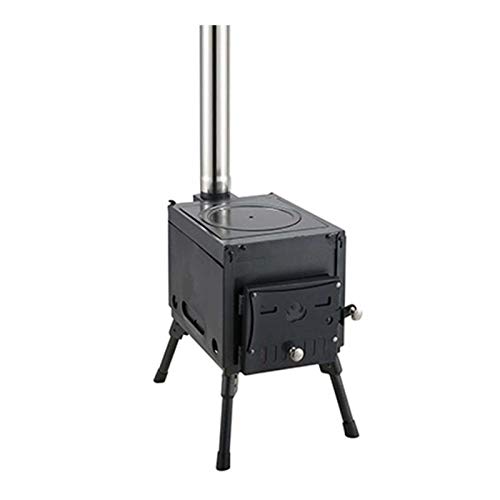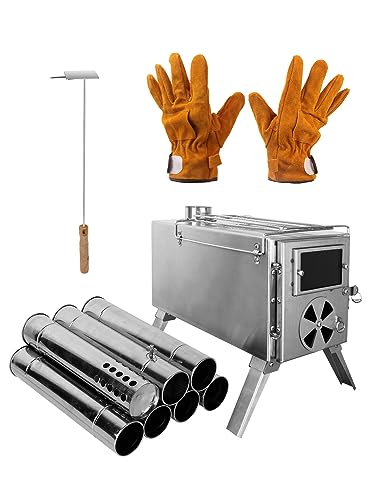Woodburning Stove Tips To Relax Your Daily Life Woodburning Stove Tric…
Latisha Zinn
2024.11.22 17:15
260
0
본문
 How to Properly Operate a Woodburning Stove
How to Properly Operate a Woodburning StoveWood stoves can provide an affordable and cozy method to heat the home. But the smoke they emit can be harmful to health. It is important to know how these appliances operate and how to use them properly.
 Many modern stoves rely upon secondary combustion or catalytic to reduce their emissions. However, older stoves and open fires generate large amounts of particulates.
Many modern stoves rely upon secondary combustion or catalytic to reduce their emissions. However, older stoves and open fires generate large amounts of particulates.The firebox
The firebox is the heart of any fireplace system. It's where you create a fire to heat your home and provide ambiance. It's a simple concept, but there are many important details that must be accounted for to keep your wood burning stove safe and efficient.
The firebox is described as a combustion chamber that has walls and an enclosure. Most fireplaces have either prefabricated metal or a the masonry firebox. The type of firebox you choose will depend on your preference and the type of fireplace that you have.
Most fireplaces with wood burning use a constant air flow to create the flame and burn fuel. Fresh air is introduced into the stove through dampers that can be adjusted inside its doors. This allows the fuel to be properly burned and also helps reduce the toxic gases produced by incomplete or unburnt combustion. The exhaust gases will be dragged through the chimney and safely away from your home.
Modern stoves with catalytic second combustion employ a special catalyst to reburn the unburnt gasses to generate additional heat. This produces a cleaner and less polluting fume than traditional wood stoves without secondary combustion. Modern non-catalytic wood stoves are available however they are generally less efficient than those with catalytic second combustion.
Some wood-burning stoves have backboilers that can be used to heat water as well as for space heating. They are known as "combination" or "hybrid" stoves and have been in use since the beginning of the 20th century.
Wood burning stoves should be burned with seasoned wood. Freshly cut wood (green) has a high water content. This can lead to low flue temperatures and excessive creosote accumulation in the chimney. This could lead to chimney fires that cause damage to the stove, and can be hazardous to your family's health.
If you're looking for an expert to look over your wood-burning stove, or make any firebox repairs ensure that the chimney professional you choose is CSIA certified and offers reviews from their customers on their website. It's also important to ask about their prices and the type of work they do.
The pipe for ventilation
Wood stoves require ventilation in order to remove the smoke from the combustion process and keep your home warm and healthy. Ventilation is required to remove carbon monoxide and nitrogen dioxide from the combustion process. It also reduces the amount of air pollution and heat loss outside. Gas, pellet and wood stoves have different requirements for venting to accommodate the ways they operate. Properly maintaining the stove's ventilation system annually is critical to ensure safety and efficiency.
The ventilation system is made up of the firebox and the vent pipe. The chimney and ventilation pipe work together to create a draft that draws smoke from the stove through the fireplace. Draft is generated by the differences in temperature and density between hot wood smoke and cold air outside. The higher the temperature of the smoke, the better it can rise through the chimney and through the ventilation pipe.
The majority of modern shed wood burner stoves are certified by the EPA as low-emission units. This means they emit far fewer pollutants than older models, which contribute to global warming and other environmental concerns. The majority of modern stoves include pollution controls that limit how much they release while ensuring the emissions are burned efficiently.
Older stoves with open flues produce a lot more carbon dioxide, which is poisonous gas that should not be allowed to escape into the home. This can happen if your chimney is not clean or if there is not enough ventilation, which is why it is essential to install carbon monoxide detectors into your home.
Before installing a brand new or used wood stove measure the distance from the place where the stove is placed on the floor to the chimney opening on the ceiling or wall. Multiplying this distance by 2 will give you the minimum length of stovepipe you need. You can use either single-wall or double-wall stovepipes, but you must allow for the adequate clearance from the combustibles.
The air vent of the stove must be adjusted when it is first lit up, until a good flame is established in the stove and its combustion process has stabilized. It is advised to avoid using wood logs in the stove as they could contain volatile chemicals that could cause the air vents to fail.
The chimney
The chimney is a complex system that requires attention and care. The chimney is made up of numerous important parts that are essential for the safety and efficiency of your stove.
The ventilation pipe, the firebox and chimney work together to exhaust the combustion gases generated by your woodburning fireplace to the outside. This is essential to preventing harmful emissions and reducing carbon dioxide levels within your home. To accomplish this the chimney and flue should be hot enough to allow the gases to exit the fireplace without cooling. This can be achieved by using a woodburning stoves for sale stove wood burning with high heat output and by adding regularly new logs to the fire.
Modern woodburning stoves are built to work with a chimney that is taller than older systems in order to achieve a better drafting effect. This could cause problems when the chimney's height is higher than the maximum allowed for your area. If this occurs the chimney could be competing with the house stack for draft, which can cause the gases to cool before they exit. This could impede the gas flow and cause a buildup of creosote that could be a fire risk.
One of the most common mistakes that homeowners make is to close and open the fireplace door too often, which can negatively impact combustion. It's important to leave the fireplace door closed whenever you can and only open it when you are required to add more firewood or ash. The door should not be opened for too long. This lets hot air from the stove to escape, making the wood cooler and more difficult to light.
Another common mistake that people make is using other types of combustibles in their woodburning stoves. This could cause higher emissions or even chimney fire. The fact is that woodburning stoves are built and optimized to burn wood and not other kinds of combustibles.
The flu
A woodburning stove requires a properly size flue to permit proper draft and air flow. The flue must be at least 25 percent larger than the pipe connecting the stove and chimney to allow adequate smoke circulation. A wood stove must be set on a non-combustible hearth with a clear space in front of the fireplace opening.
Modern stoves have a catalytic combustion system that reduces the amount harmful byproducts that are released into the chimney. This feature can increase the efficiency of shed wood burner stoves by burning a flame which produces more heat while emitting less pollutants. Utilizing other kinds of combustibles than firewood, however, can cause problems with lower efficiency and more emission levels.
It is important to use seasoned or dry wood when you are burning wood in your fireplace or stove. If your wood isn't seasoned or dried, it could emit a lot of water vapor into the chimney. This could lead to low flue temperatures and possibly a chimney fire.
Another way to avoid a chimney fire is to have a professional examine and clean your flue system on a regular basis. This should include the chimney, stovepipe and the chimney itself to ensure all are in good shape.
A soiled stove or flue system could cause an unclean draft in your chimney, which could cause carbon monoxide to build up within your home. This could be hazardous for your family and should never be allowed to occur.
A good rule of thumb is to hire a professional chimney sweep clean your chimney and stove once per year. This will help keep the stove and chimney working efficiently.

댓글목록 0